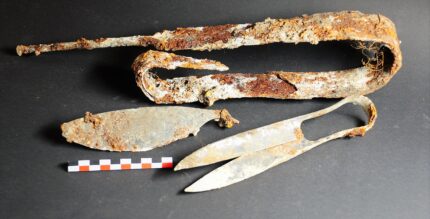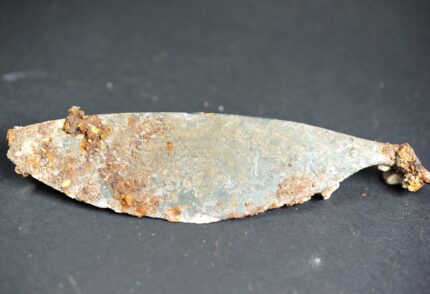A pair of 2300-year-old scissors have been discovered in a Celtic cremation grave in Munich. The scissors are in exceptional condition, with the blades still sharp and shiny.
“A pair of scissors that are more than 2,300 years old and in a condition as if they could still be used today – that’s a very special find,” says Prof. Mathias Pfeil from the BLfD. “The fortunate fact that this tool was so excellently preserved is just as impressive as the craftsmanship of this object,” says Pfeil.
 Archaeologists with the Bavarian State Office for the Preservation of Monuments (BLfD) were called in when a disposal crew searching for unexploded World War II ordnance at a construction site in Munich’s Sendling borough encountered underground structures of suspected archaeological interest. The BLfD team found the tomb in the middle of a square structure formed by four wooden posts. It dates to the 3rd or 2nd century B.C., a period when the Celts cremated their dead and interred the cinerary remains in pits together with grave goods.
Archaeologists with the Bavarian State Office for the Preservation of Monuments (BLfD) were called in when a disposal crew searching for unexploded World War II ordnance at a construction site in Munich’s Sendling borough encountered underground structures of suspected archaeological interest. The BLfD team found the tomb in the middle of a square structure formed by four wooden posts. It dates to the 3rd or 2nd century B.C., a period when the Celts cremated their dead and interred the cinerary remains in pits together with grave goods.
 In addition to the scissors, this grave also contained a folded sword, the remains of a shield, a spearhead, a razor and a fibula. All of the grave goods are objects of impressive craftsmanship that attest to the high social status of the deceased.
In addition to the scissors, this grave also contained a folded sword, the remains of a shield, a spearhead, a razor and a fibula. All of the grave goods are objects of impressive craftsmanship that attest to the high social status of the deceased.
The scissors were multifunctional devices. They could have been used to cut hair, textiles, even to sheer sheep. The sword was ritually destroyed by being heated and folded so it was unusable. This may have been a ritual offering or a “killing” of the sword so it could follow its owner into the afterlife.

